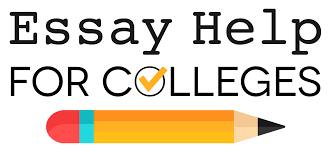How to Perfect Your Essay: The Ultimate Writing Checklist for University Success
Do you find yourself staring at a blank screen hours before your essay deadline? A comprehensive writing checklist might be the academic lifesaver you need.
Studies show that 65% of university professors cite poor organization and unclear arguments as the top reasons for lower essay grades. Despite hours of research and writing, many students miss crucial elements that could elevate their work from average to excellent.
In fact, even experienced writers rely on systematic review processes to perfect their work. The difference between a B- and an A+ often lies not in how much you know, but how effectively you communicate your ideas on paper.
This guide breaks down the essential components of a writing checklist that will transform your essay writing process. From clarifying your purpose to polishing your prose, we'll cover everything you need to create compelling, well-structured academic papers that impress your professors and boost your grades.
Let's turn that blank screen anxiety into confident writing productivity!
Clarify Your Purpose and Audience
Clarify Your Purpose and Audience
Successful essay writing begins with clarity about what you're saying and who you're saying it to. Before diving into research or drafting, take time to establish these foundational elements on your writing checklist.
Define your main argument or thesis
The cornerstone of any effective essay is a strong thesis statement—a condensation of your entire argument into one or two sentences. Your thesis serves as the answer to the question your paper explores and provides readers with a roadmap of what to expect.
A powerful thesis statement should:
- Take a position on which reasonable people could disagree
- Address a topic that can be adequately covered within your assignment's scope
- Express one main idea clearly and precisely
- Assert your conclusions about the subject
When developing your thesis, avoid simply stating facts that no one would dispute. Additionally, steer clear of vague language like "good" or "successful" without explaining why something deserves those labels 1. Your thesis should never merely announce your topic—it must present an interpretation or perspective that you'll defend throughout your essay.
Remember that formulating a thesis is rarely the first step in your writing process. Generally, you'll need to collect evidence, identify relationships between facts, and think about their significance before arriving at a working thesis 1. This initial thesis may evolve as you write, which is perfectly normal. According to writing center experts, your thesis should be specific enough that if a reader's first response is "how?" or "why?", you need to clarify your position 1.
Identify your target reader
Understanding your audience is crucial for making strategic decisions about content, organization, and tone. Think of your audience as falling somewhere between your instructor and a broader academic community 2.
Start by asking yourself these critical questions:
- Who is likely to be interested in your topic?
- What background knowledge do they already possess?
- What values and assumptions might they hold?
- Will they potentially agree or disagree with your position?
Your readers' demographics, education level, and professional background should influence your writing approach. For instance, if writing for fellow students, you might use different terminology than if addressing professors 3. Consider what your readers already know about your subject and the probable source of their knowledge—is it direct experience or secondhand information? 4
Furthermore, think about your relationship with the reader. If you're writing to someone with more authority, such as a professor, your tone should be more formal and polite 3. However, maintain an appropriate middle ground—avoid overly simplistic explanations that might condescend to your audience 2.
Decide what you want the reader to learn or feel
Before writing, determine precisely what takeaway you want your reader to leave with. This forms the foundation of your essay's purpose and guides every subsequent decision in your writing process.
Ask yourself: "What is the one idea I want readers to remember even years later?" 5 This big-picture question helps focus your writing on what truly matters. Consider what concepts, theories, or perspectives are essential for readers to understand your field or topic 5.
Effective essays don't just convey information—they transform the reader in some way. Whether you aim to persuade, inform, or analyze, clarify how you want your writing to change your reader's thinking. When planning what you want readers to learn, consider both the knowledge components (facts, concepts) and the skill components (analysis, application) 6.
Rather than framing goals as "The essay will cover..." or "I will teach...", focus on student-centered outcomes like "Readers will understand..." or "Readers will be able to..." 6. This subtle shift keeps your writing focused on reader benefits rather than just content delivery.
While drafting, consistently return to these foundational questions about purpose and audience. They form the compass that guides your essay toward its destination. Subsequently, every paragraph, sentence, and word should contribute to fulfilling your purpose for your specific audience. Moreover, clarity about these elements now will make later writing checklist items easier to complete.
Organize Your Essay Structure
Organize Your Essay Structure
A well-structured essay guides readers through your argument with clarity and purpose. Once you've established your thesis and audience, the next crucial step on your writing checklist involves creating a coherent framework for your ideas.
Create a logical outline
Outlines serve as the backbone of effective academic writing. Fundamentally, the best time to create your outline is during the pre-writing stage, not during writing or revision. A thoughtfully constructed plan can save you from extensive reorganization later when your first draft is complete 7.
An effective outline:
- Maps the progression of your argument
- Shows what each paragraph will contain
- Illustrates how all points connect as a whole
- Serves as a roadmap for both you and your reader
Start by placing your thesis at the top of a blank page, then list the main points needed to effectively argue that thesis. Next, break down each main claim into the sub-claims required to support them 8. Although most outlines remain private working documents, they should still follow basic principles of organization.
As you accumulate research notes, identify key points and arrange them into a logical sequence. Consider using outline view in Word or numbered lists in Google Docs to build your structure 7. Even when formal subheadings aren't required, adding them to early drafts helps you visualize your argument's flow and identify potential gaps 8.
Use clear topic sentences
Every paragraph in your essay should begin with a topic sentence that performs two essential functions. First, it makes a claim or states the main idea developed throughout that paragraph. Second, it signals to readers how the paragraph connects to your larger argument 9.
A strong topic sentence essentially works as a mini-thesis for your paragraph. When read in sequence, your essay's topic sentences should provide a sketch of your entire argument, protecting readers from confusion by guiding them through your reasoning 10.
To create effective topic sentences:
- Make them specific enough to give a clear sense of the paragraph's content
- Keep them general enough that they don't reveal everything
- Ensure they directly relate to your thesis statement
- Use them to create transitions between paragraphs
Notably, topic sentences usually appear at the beginning of paragraphs, although sometimes a transitional sentence might come first 10. In more advanced writing, you might occasionally place a topic sentence later in a paragraph to build toward a climax 11.
Ensure each paragraph supports the thesis
Each paragraph in your essay must contribute to developing your thesis. Although paragraphs serve multiple functions—explaining, analyzing, comparing—they all need to advance your central argument in some way.
A strong academic paragraph contains three key elements:
- Claim: Your topic sentence that connects to your thesis
- Evidence: Supporting information from research or analysis
- Analysis: Your explanation of why this evidence matters 12
To evaluate whether your paragraphs effectively support your thesis, read only the first sentence of each. You should be able to follow your argument's development through these sentences alone 12. Furthermore, ask yourself: Are your points in a logical order? Are there gaps in your argument? Do topic sentences clearly state main points? 8
Beyond that, coherence within paragraphs keeps your writing flowing smoothly. Create coherence by repeating key terms, using parallel structures, maintaining consistent point of view and tense, and employing appropriate transitions 13.
As a result, your essay achieves unity—the quality where all parts work together toward the same goal: proving your thesis. Although paragraph lengths vary by assignment, each paragraph should focus on one main idea with evidence and analysis that directly supports your central argument 14.
Refine Paragraphs for Clarity
Refine Paragraphs for Clarity
Even the most brilliant ideas falter when presented in muddled paragraphs. After organizing your essay structure, the next crucial step on your writing checklist involves refining each paragraph to ensure crystal-clear communication.
Check paragraph unity and coherence
Unity in paragraphs means sticking to one main idea throughout. Each paragraph should focus on a single concept introduced by a topic sentence, with every subsequent sentence directly supporting that concept. Consequently, if a sentence doesn't relate to your paragraph's main idea, it either needs revision or relocation.
To test paragraph unity, ask yourself: "Can I identify the central point?" If your paragraph addresses multiple topics, consider dividing it into separate paragraphs. Remember that the basic rule is keeping one idea to one paragraph throughout your essay.
Coherence refers to how smoothly your ideas flow within and between paragraphs. To achieve coherence, create logical bridges by carrying the same idea from sentence to sentence, and verbal bridges by repeating key terms or using synonyms across sentences. Indeed, paragraphs become easily understandable when you structure sentences in parallel form and maintain consistent tense and point of view.
Look at each paragraph objectively—does it progress logically from one thought to the next? Or do ideas seem disconnected, forcing readers to make mental leaps? Your goal is creating paragraphs where ideas build upon each other naturally.
Use transitions to connect ideas
Transitions serve as signposts guiding readers through your argument. Unlike mere decorative elements, transitions provide specific directions about how to interpret relationships between ideas. Without them, your essay risks appearing choppy or disjointed.
Effective transitions function in two ways: they summarize previously stated information and prepare readers for upcoming points. They can appear at the beginning of paragraphs, at the end of preceding paragraphs, or in both locations depending on your needs.
Different relationships between ideas require specific types of transitions:
- Cause and effect: therefore, hence, consequently
- Contrast: nonetheless, conversely, on the contrary
- Addition: furthermore, likewise, in addition
- Example: in particular, specifically, for instance
- Time: meanwhile, thereafter, subsequently
Undoubtedly, selecting appropriate transitions involves identifying the exact relationship you want to convey between ideas. Rather than mechanically inserting "furthermore" or "nevertheless," choose transitions that precisely match the logical connection you're establishing.
Avoid repetition and off-topic content
Staying focused on your thesis throughout your essay is vital. Prior to writing, create a clear plan outlining what points support your argument. Thereafter, examine each paragraph in relation to your topic, asking: "How does this paragraph advance my thesis?" If you can't answer clearly, the paragraph might need revision or removal.
Similarly, evaluate individual sentences within paragraphs. Every sentence should connect to the paragraph's topic sentence. Sentences that don't support the paragraph's main idea should be deleted or moved elsewhere, regardless of how well-written they might be.
Repetition can manifest at both word and idea levels. To identify word repetition, use your document's search function to highlight overused terms. Replace repetitive words with synonyms or rephrase sentences entirely. Above all, read your work aloud—this practice helps catch repeated sounds, words, or structures that might otherwise go unnoticed.
For idea repetition, consider creating a reverse outline of your draft, noting the main point of each paragraph. This technique reveals where you've revisited the same concepts multiple times. Unless intentional for emphasis, combine repeated ideas into single, stronger paragraphs.
Your writing checklist should include regularly asking: "Does this information directly support my thesis?" Being ruthless about eliminating tangential content, regardless of how interesting it might be, will strengthen your argument and respect your readers' time.
Polish Your Sentences and Style
Polish Your Sentences and Style
The final step on your writing checklist involves refining your prose at the sentence level. Even essays with strong arguments and clear organization can fall flat without polished sentences. Mastering this micro-level editing transforms adequate writing into exceptional academic work.
Vary sentence length and structure
Alternating between short and long sentences creates a natural rhythm that keeps readers engaged. Short sentences deliver impact. Longer sentences allow for nuance and complexity. Together, they create a dynamic reading experience that prevents monotony.
Sentence variety comes from mixing four basic types: simple, compound, complex, and compound-complex. Each serves different purposes in your writing. Simple sentences work best for emphasizing key points. Complex sentences, by contrast, help establish relationships between ideas. Compound sentences connect related thoughts, while compound-complex sentences combine multiple ideas with subordinate elements.
Pay special attention to sentence openings. Starting consecutive sentences with the same word or phrase creates a monotonous effect. Initially, scan your paragraphs for repeated openings. Secondly, revise them using different grammatical structures—prepositional phrases, dependent clauses, or transitional expressions. This technique alone can markedly improve your writing's flow.
Use precise and active language
Active voice clarifies who is performing actions in your sentences, making your writing more direct and concise. Passive voice, with its reversed structure, typically requires more words to express the same idea. For example, "The researchers conducted the experiment" (active) uses fewer words than "The experiment was conducted by the researchers" (passive).
Throughout academic writing, active voice is typically preferred for its clarity and directness. Passive voice remains appropriate in specific circumstances—especially when emphasizing the recipient of an action or maintaining an objective tone in scientific writing.
Verbs should do the "heavy lifting" in your prose. Replace weak verb phrases with stronger, more specific verbs:
- "She made an improvement to the process" → "She improved the process"
- "They conducted an investigation" → "They investigated"
- "Give consideration to" → "Consider"
Precision extends beyond verbs. Altogether eliminate vague terms like "things," "stuff," or "many" from your academic writing. Instead, use specific nouns that give readers a clear understanding of what you're referencing.
Eliminate filler words and vague terms
Filler words function as the verbal equivalent of "um" or "uh"—they take up space without adding meaning. Removing these unnecessary words makes your writing more streamlined and powerful. Common culprits include:
- Intensifiers: really, very, quite, literally
- Hedging terms: sort of, kind of, basically, actually
- Empty phrases: in order to, due to the fact that, in the event that
- Expletive constructions: there is, there are, it is
Cutting these fillers can reduce your word count by 25-30% without sacrificing meaning. For example, instead of writing "There is an octopus sitting on top of my car," write "An octopus is sitting on my car."
Correspondingly, remove redundant pairs where one word implies the other: "past memories," "final outcome," "free gift," or "unexpected surprise." These repetitions add nothing but extra words to your sentences.
Finally, replace phrases with single words where possible. "In the event that" becomes simply "if." "With reference to" becomes "about." These small changes accumulate to create clearer, more forceful writing that respects your readers' time and intelligence.
Polishing your sentences requires careful attention to detail, but the effort pays off in writing that communicates your ideas with maximum clarity and impact.
Related Posts
Crafting Powerful Academic Arguments: Tips & Strategies
Do you find yourself staring at a blank screen hours before your essay deadline? A comprehensive writing checklist might be the academic lifesaver you need. Studies s....
The Ultimate Essay Writing Checklist for University Students
Do you find yourself staring at a blank screen hours before your essay deadline? A comprehensive writing checklist might be the academic lifesaver you need. Studies s....
The Ultimate Guide to Writing a Literature Review for Psychology Dissertations
Do you find yourself staring at a blank screen hours before your essay deadline? A comprehensive writing checklist might be the academic lifesaver you need. Studies s....




